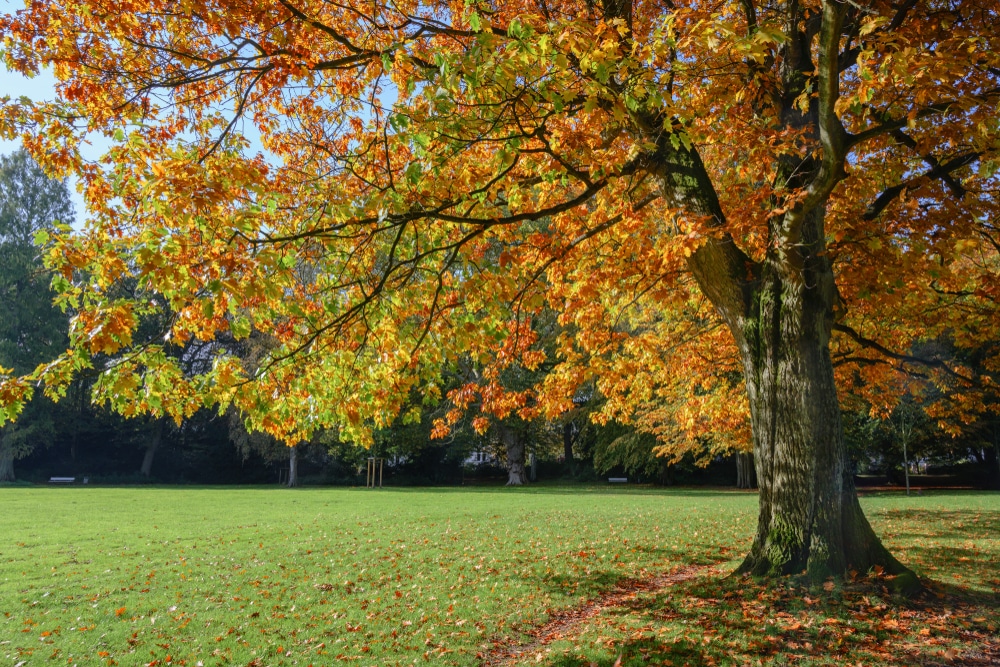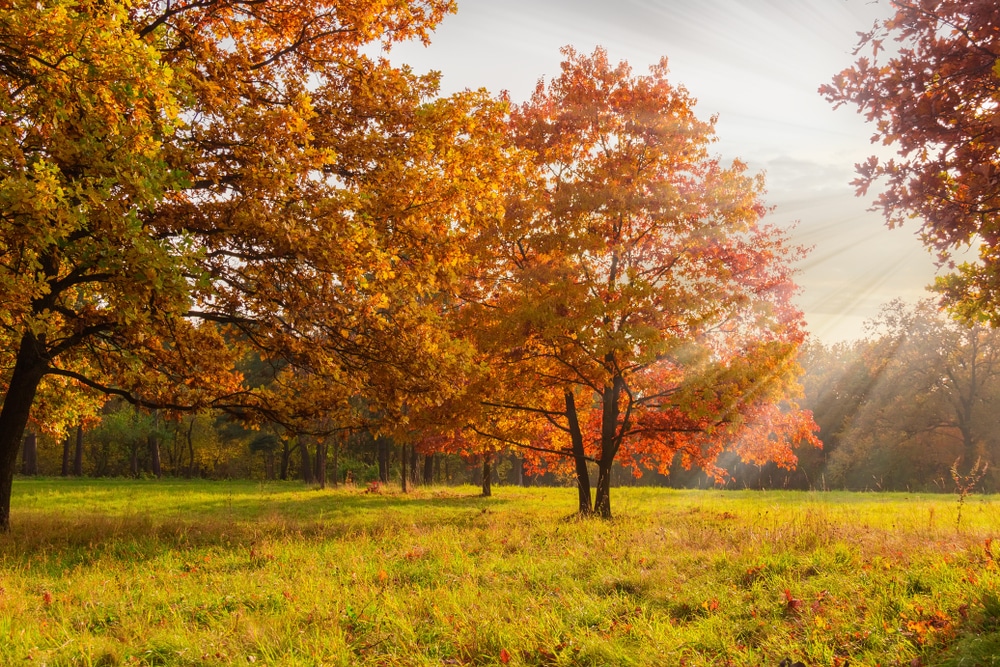Red oak trees are among the most popular species of shade trees in the US. They can grow to an impressive height and have a graceful spreading canopy that provides welcome relief on hot summer days. However, there are also some downsides to red oaks that you must consider before planting this type of tree in your yard. Let’s look at the pros and cons of red oak trees.
Pros and Cons of Red Oak Trees

Red oaks have the botanical name Quercus rubra and are grown for their ornamental value. The trees get huge and have rounded crowns. Young trees have grey to smooth silver bark. The trees develop ridges and marks on their bark as they age.
Here are some things to consider before adding a red oak sapling to your yard:
Pros:
Red oaks are very hardy trees and can withstand most diseases, pests, and weather conditions. They also grow faster than the white oak, reaching maturity in just a few decades. Generally, these trees grow about two feet yearly and can reach a height of around 60 to 80 feet.
Because they grow so quickly, their shade is dense and well-suited for blocking out the sun on hot days. They provide shelter and shade for humans and wildlife. Red oaks are also long-lasting and will live up to 500 years.
Red oak trees thrive in various types of soil and even do well in compacted soils. They are also relatively easy to transplant compared to other varieties of oak trees.
Finally, they have impressive fall color, and their red leaves will brighten your yard in the fall. The color of their wood is also slightly red, which is how the oaks get their name.
Cons:
Red oaks can be messy as they drop their leaves early in the fall. This means that you’ll often have to rake leaves off your lawn or step over them when walking around your yard.
They also get very tall, so you’ll need to ensure you have enough space in your yard for a mature red oak tree. The trees have a canopy that can spread 60 to 70 feet across; however, it will take years for the tree to grow to this size.
Red oak trees are slightly smaller than the white oak, which means they don’t look as majestic.
Also, while red oak flowers are not known to cause allergies, some people report a scratchy throat and sneezing from exposure to their pollen.
How to care for a red oak tree
Red oak trees are generally considered easy to care for. The following tips will help your tree thrive:
Soil
Red oak trees like to be planted in soil that is fairly acidic and has a pH range of between 5.0 and 6.0. The trees can survive in soil with a more neutral pH range, but their growth may be stunted.
You should avoid planting red oaks in soil that’s too alkaline (pH above 7.5) as this can cause iron deficiencies that will affect your tree’s health.
Watering
Red oaks don’t require watering in many areas as long as there is sufficient rainfall. If you live in a drier region, you should water your trees deeply at least once weekly. Young trees will need more water until they are well established. Trees that are a few years old will be relatively drought tolerant.
Sunlight
Red oaks grow best in areas that get full sun. They can cope with some shade but should get at least six hours of sunlight per day.
Fertilizer
Using a good quality fertilizer once or twice a year will help your oak tree thrive. You can use a 12-4-8 fertilizer for the best results.
Pruning
Removing any dead or diseased branches or leaves during the winter or early spring is a good idea. You can also prune your tree to help maintain its appearance and encourage new growth.
Conclusion
A red oak will be a good choice if you’re looking for a fast-growing, hardy shade tree that can brighten up your yard in the fall. You’ll want to consider all the pros and cons when deciding whether a red oak tree is suitable for your yard. You can either plant an acorn or buy a young tree.
